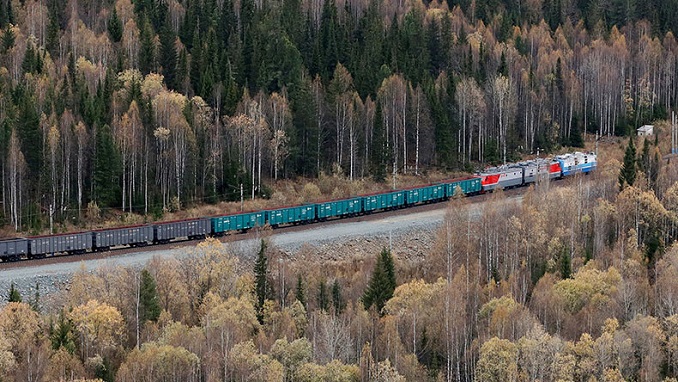Because of the Russian government’s failure to invest in the maintenance and development of the country’s long-haul railway network, Beijing is increasingly skeptical that Russia can be a land route to Europe, the Jamestown Foundation writes citing Russian media reports.
Since Moscow cannot boast a developed highway system and the needed river transportation corridors, the Kremlin relies more heavily on the country’s long-haul railway network and counts on it to allow Russia to play a key role in trade between China and Europe, the report says.
Consequently, China is looking to send its goods either by sea or by routes that bypass the Russian Federation entirely. So what might seem to be a domestic problem is rapidly becoming an international one for Moscow.
The seriousness of this situation is reflected less in the frequent reports about train accidents—like the one this week in Vladivostok, where a 20-car coal train derailed than by the fact that, as a result of Russia’s failure to modernize its rail system, trains travel across the Trans-Siberian Railroad (TransSib) at rates too slow to make that route economically viable.
In China, cargo trains travel at up to a hundred kilometers an hour (passenger train speeds can reach several hundred miles per hour), but Russian ones in general average only 35–40 kilometers an hour. And as Andrey Ivanov of Svobodnaya Pressa reported last year, “on certain parts of the TransSib in Siberia” that Russia wants China to use, their speed does not even exceed 10 kilometers per hour.
Moscow could change this if it found and spent more money on its railways, but that is not happening. In part, Russian railways face a combination of problems that have seen its rail network decline over the last two decades, with Moscow cutting service to many parts of the country and eliminating the government subsidies that had allowed them to function. Indeed, Moscow has announced it will cut the money it spends on the railway system by reducing Russian Rail’s employees by another 30,000 by 2025.
Moreover, according to President Putin’s opponents, the Russian government has for years spent money on high-visibility projects like the Kerch Bridge and restoring stations in major cities rather than on laying new track and improving management of the system. This investment approach has served as a major channel for state funds to end up in the pockets of Vladimir Putin’s associates rather than under-served communities or regions within Russia.












